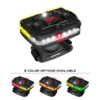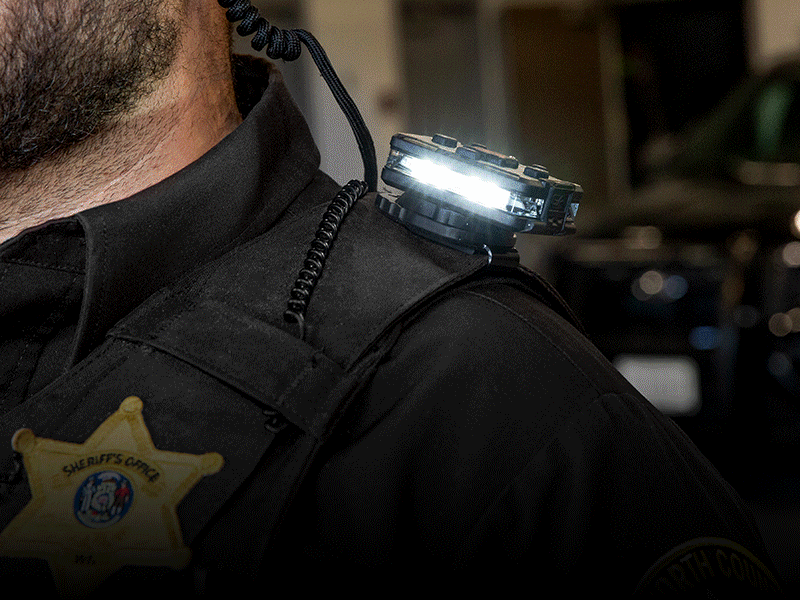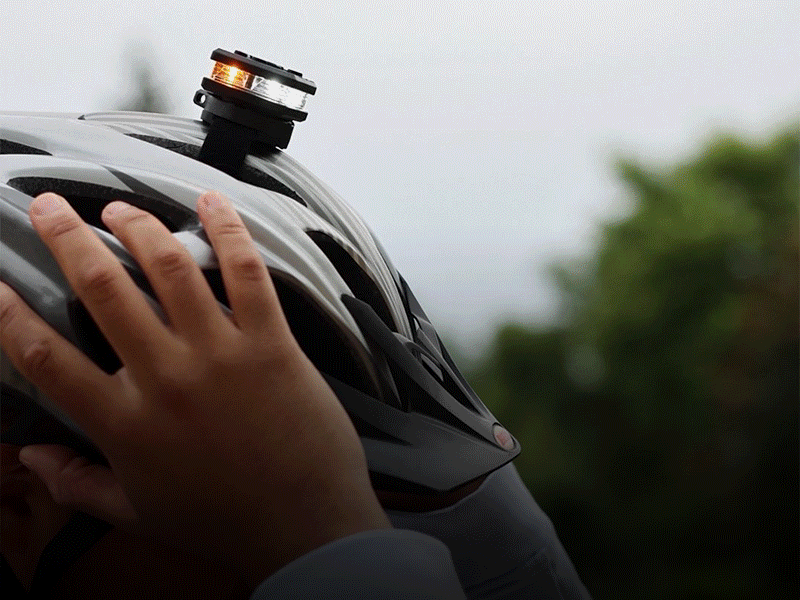Maine Emergency Vehicle Light State Statutes
Maine Emergency Vehicle Light State Statutes
In Maine, there are strict and clear guidelines on how different vehicles should make use of emergency lights. The color of the lights is dictated by the vehicle’s position, and there are rules as to where they should be mounted, and how and when to use them. The laws of the state of Maine are very specific on the regulations for emergency vehicle lighting, as described below.

Police Lights
A police vehicle in the state of Maine is allowed to display and use red emergency lights. Red emergency lights are permitted on police vehicles according to state statute 29-A 2054 section 2F but can only be used for up to half of all emergency police lights mounted on the vehicles.
Section 2D requires a blue light, or a blue and white light combination, to be used on a police vehicle. In addition, a vehicle operated by a police chief, a sheriff, or a deputy sheriff is permitted to show a blue light. Any vehicle operated by a skilled deputy sheriff performing court-related security-related services is also allowed to use a blue light.
Section 2A provides for alternate flashing headlights on police vehicles under this same statute. Section 2B provides that police vehicles are the only cars and trucks that can be equipped with a device that creates alternate brake lights, rear directional lights, and back-up lights for the vehicle. A device may also be installed behind the rear brake lenses to create strobe lights.
Fire Truck Lights
In the State of Maine, fire trucks are allowed to have both blue and red lights. Section 2D of the State Statute 29-A 2054 provides that emergency lights used on a fire department vehicle are permitted to use one blue light mounted facing the rear of the vehicle to be seen primarily by traffic behind the fire truck. Section 2F states that red lights or a combination of red and white emergency lights must be displayed by fire trucks.
Section 2A allows fire trucks to install a device to create alternate flashing headlamps.
Volunteer Fire Fighter Lights
The rules for voluntary fire vehicles differ slightly from those for municipally owned trucks. Section 2F of Maine State Statute 29-A 2054 states that an active member of a municipal or voluntary fire department may use one red light or a combination of red and white light by a municipal official and the fire chief. This light has to be a flashing auxiliary light mounted either to the windshield or the dashboard at the front of the vehicle. Another option is to display 2 flashing red lights, or a combination of red and white auxiliary lights, in the front of the vehicle just above the bumper but below the hood. Additionally, this option requires one red auxiliary light mounted in the back window.
Such warning lights can only be switched on while the vehicle is on the way to an accident or fire or at the scene of it. Any lights mounted on the dashboard or windshield must be partially covered inside the vehicle, so that the driver’s view of the road is not obscured. The use of lights isn’t necessarily permanent, as the fire chief can revoke permission to use them at any time.
Ambulance lights
Section 2F of Maine Statute 29-A 2054 gives ambulances permission to display red lights or a combination of red and white lights. Section 2D allows one blue emergency light to be mounted facing the back of the vehicle, primarily visible to the ambulance traffic.
Section 2F allows members of an emergency medical service licensed by the Maine Emergency Medical Services to display emergency lights, similar to volunteer firefighters. These vehicles may use red lights, or the combination of red and white flashing auxiliary lights, if authorized by the emergency medical service chief official. The show rules are the same as those for volunteer firefighters, as set out above. The use of emergency lights for emergency medical personal vehicles may also be repealed at any time by the emergency medical service’s chief official.
Tow truck lights
Do not allow tow trucks to display blue, red or white lights. Under state statute 29-A 2054 section 2C, only an amber light is allowed to be displayed on a tow truck. These trucks must be fitted with a flashing light on top of the vehicle displaying the amber light above 360 degrees. The light must be activated on public roads or at any location where it is reasonably expected that public traffic is on. The light should be in use whenever another vehicle is actively serviced, released, loaded, unloaded, or towed by the tow truck
Construction Vehicle Lights
Vehicles used for building on public roads are also allowed to use an emergency light colored with amber. Section 2C of Statute 29-A 2054 requires that while the work is underway, a vehicle used for road maintenance on public roads should be equipped with amber auxiliary lights. A workplace safety inspector who operates a labor motor vehicle department is also authorized to display emergency vehicle lighting on amber. Section 2A of this same statute provides for the furnishing of construction vehicles with a device that creates alternative flashing headlights on the truck.
Utility Vehicle Lights
Utility vehicles are permitted to use amber lights according to section 2C of Maine state statute 29-A 2054. The lights should be engaged when the utility truck is being used for maintenance or when parking on a roadway creates a potential traffic hazard.
Pilot Vehicle Light
A pilot vehicle is required if an oversized load of more than 80 feet in length or 12 feet in width is accompanying. Section 9 of State Statute 29-A 2382 states that pilot vehicles that escort oversized loads must display both warning signs and emergency lights. In Maine pilot vehicles require a permit to display lights and accompany an oversized load.
The lights must be colored amber, and may be blinking, spinning, or a light bar. In the case of a bar light, the lights must be located to the extreme top left and right, or left to right. The signage, which must be covered when the pilot vehicle is not in service, must read “Oversize Load” in black letters 8 inches high mounted on a yellow background, and must be 5 feet wide by 12 inches high. When the load is preceded it should be mounted on the front bumper, and the rear bumper mounted after the load. It can also be mounted on the roof, facing the appropriate direction in relation to the oversized vehicle, depending upon its position.
Security Vehicle Lights
Security vehicles may in certain circumstances display amber lights. Section 2C of Statute 29-A 2054 provides for the use of amber emergency lights by any vehicle used or owned by a contract security firm. When the driver and vehicle help with traffic control, or direct other vehicles around traffic obstructions and hazards at construction or maintenance sites, the lights may be activated on public roads.
It is important for all vehicles within the state of Maine to comply with the emergency vehicle light laws. Vehicles should only display the color of lights authorized for the role of the vehicle or truck, and should avoid flashing lights and strobe lights unless expressly authorized to do so in accordance with state statutes. It is also important that all vehicles follow the laws regarding when and how to use the lights in the event of an emergency or potential hazard to traffic.
For more information on what lights are available to you, please call your State Highway Patrol office at: 207-626-3811
*Please note that these numbers are what we can currently find, and the numbers may have changed since this listing.





